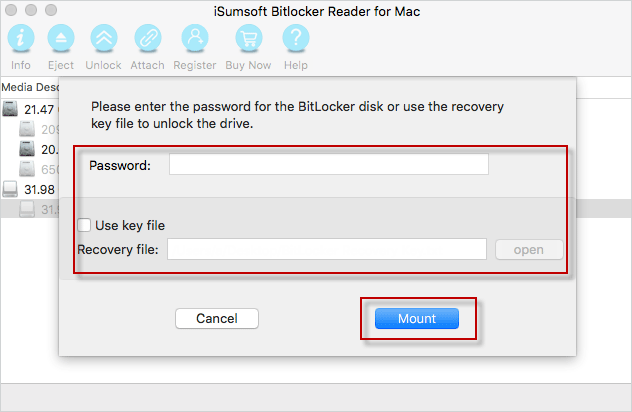

- #Mac could not unmount disk mac os x
- #Mac could not unmount disk driver
- #Mac could not unmount disk software
- #Mac could not unmount disk mac
What is the “Couldn’t Unmount Disk” Error on Mac?

When this error pops up, any attempted task gets stopped right in its tracks. One of the common errors encountered when using Disk Utility is the “Couldn’t Unmount Disk” error. Disk Utility will check the health of your hard drive and repair any disk errors if possible.ĭisk Utility usually works smoothly, but there are times when frustrating errors occur and prevent the process from being completed.

#Mac could not unmount disk mac
For example, you can run a disk check when your apps quit simultaneously, an external drive is not working properly, or your Mac won’t startup. First Aid Repair Order You can actually repair the devices in any order, but I’ve been using the following order successfully for a while: Volume, Container (if applicable), Physical drive.The Disk Utility on Mac is a very useful system tool for fixing specific disk problems. Each item can be selected and repaired using the First Aid tool. If this is an HFS-formatted drive, there won’t be any containers under the drive level, just volumes. At the next level under the physical drive is the Container (APFS file system), followed by the volumes. The organization of the devices is hierarchical, with the physical drive listed first, using the manufacturer’s name, or the model name or number, or both. The sidebar will now display all devices, including the physical drive and any it may have, as well as any APFS or HFS volumes associated with the physical drive. (The View button in Disk Utility’s toolbar will expand the sidebar to show all devices.) Click the View button in the Disk Utility toolbar and select Show All Devices from the popup menu, or select Show All Devices from the View menu. Repairing a Container can affect all volumes within the container. Repairing a volume will normally only affect the selected volume. As you move from the lowest level, the Volume, you add additional items that can be affected by a repair failure. My reasoning for this order is to limit potential data loss when repairing. If so, then right click on the file, click 'Show Contents Packages'.
#Mac could not unmount disk software
(If you disable SIP to use certain third-party software or unsigned kernel extensions, you’re on you own now.) Some Disk Utility stalwarts will also be disappointed that this version omits support for multi-disk or RAID arrays. During El Capitan’s beta testing, one round of release notes from Apple explained the permissions removal from Disk Utility by noting that during software updates, any permission issues would be resolved by an installer, but that otherwise, there was no need. (SIP), also known as rootless mode, prevents modification to these files. But in El Capitan, any system file for which Repair Permissions would have restored these settings can no longer be modified during normal operating. Even so, from all reports, permissions repairs had little real effect for years-it just made us feel better.
#Mac could not unmount disk driver
A printer driver with the wrong switches flipped might not be available to the system or the driver might be unable to access the printer settings file or temporary print queue directories. It made sense that repairing permissions on files for which OS X knew precisely what settings should be in place could fix random faults. Caelenwilson$ sudo umount -f /Volumes/Caelen_HDD WARNING: Improper use of the sudo command could lead to data loss or the deletion of important system files. Upon using the second command, I got an error stating that the disk couldn't be unmounted. You can also burn to a CD, boot it and try to format your external HD from it. See What is the ‘Mac OS X Base System’ disk image on my 2011 Macbook AIr? To get an explanation.
#Mac could not unmount disk mac os x
The Mac OS X core system image is not the cause of your problem. Everywhere it really is you get that blunders message, let us know what exhibit screen you're in (Partition, Erase, different), WRITE DOWN the precise words shown and record decrease back. If not 'Mac OS prolonged (journaled)' format it wisely.


 0 kommentar(er)
0 kommentar(er)
